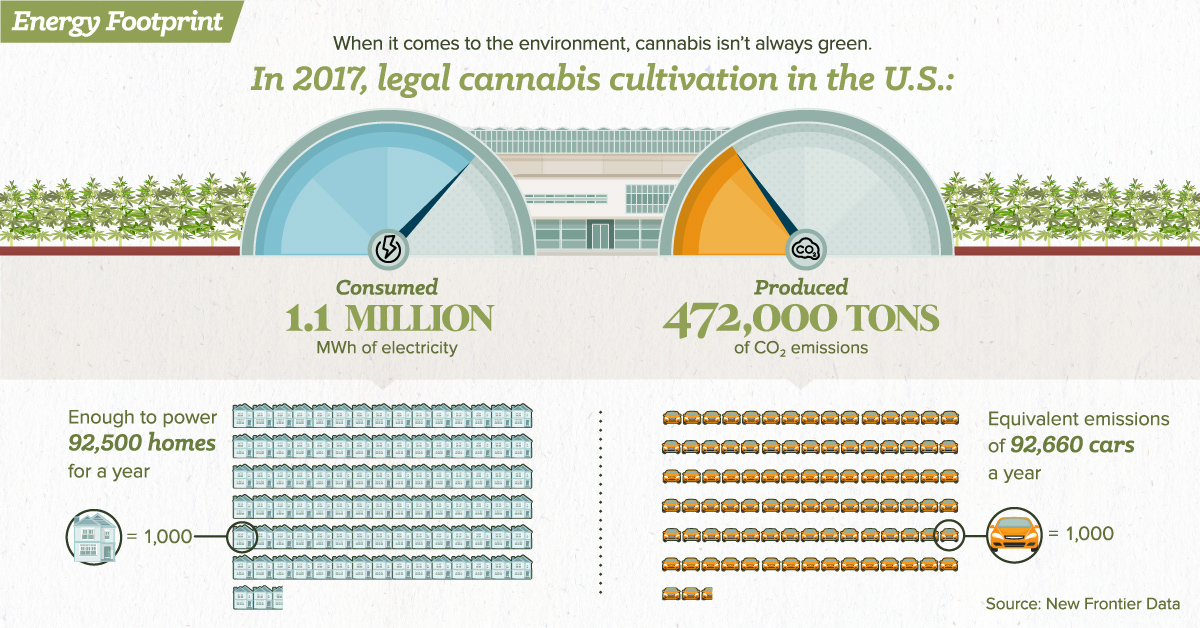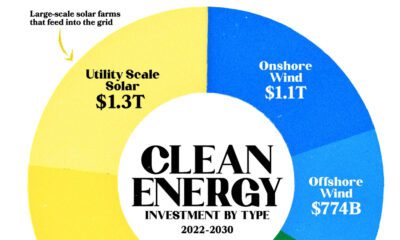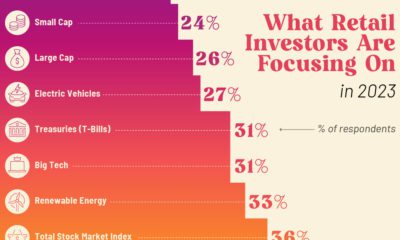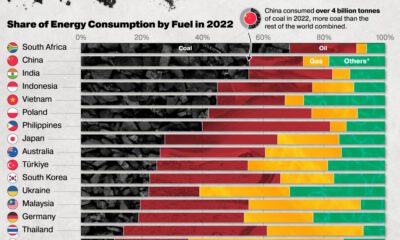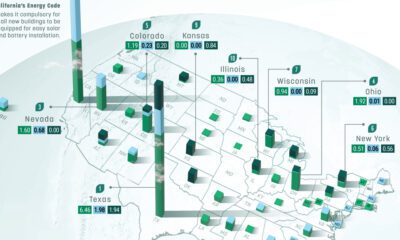Cannabis
Balancing the Environmental Costs of Cannabis

Balancing the Environmental Costs of Cannabis
Economic development comes with a massive environmental cost.
Since 1980, heavy industrial activity has caused the doubling of CO2 emissions. As scientists warn of the lasting negative impacts this will have on the planet, nearly every industry is committing to sustainable practices to try to counteract this effect.
Today’s infographic comes from The Green Organic Dutchman, and it demonstrates that while the business of cannabis isn’t always eco-friendly, there are several tried-and-tested ways to reduce its massive footprint.
A HEFTY PRICE TO PAY
Energy is the second-highest cost driver in cannabis cultivation after labor.
There are two main culprits – lighting and HVAC systems (heating, ventilation, and air conditioning). Combined, they make up a whopping 89% of energy use in cannabis cultivation operations.
Last year, legal cannabis cultivation was responsible for consuming 1.1 million MWh of electricity, and producing 472,000 tons of CO2 emissions. That’s enough to power 92,500 homes, and produce the same emissions as 92,660 cars per year. As legal cannabis production scales, this will only escalate.
Much of this data can be attributed to how the plant is grown.
| Growing method | Power consumption (kWh/g) | Carbon intensity (lbs CO2e/g) |
|---|---|---|
| Indoor | 1.27 | 1.24 |
| Greenhouse | 0.94 | 0.72 |
| Outdoor | 0.07 | 0.05 |
Indoor cultivation is roughly 18 times more energy-intensive than outdoor cultivation, and produces 25 times the carbon emissions. On the other hand, outdoor production produces lower overall yield per square foot. Since it’s difficult to control the environment, impurities can also end up in the final product.
That’s why many companies opt for a hybrid approach instead – balancing the benefits of precise control, with the use of natural light to lower production costs.
A GAME PLAN FOR SUSTAINABILITY
Many licensed producers are adopting a suite of strategies to relieve this environmental footprint.
- Renewable energy
Diversifying the energy sources for cannabis cultivation can reduce carbon emissions. Solar and wind are top choices among cultivators. - LED lighting
LED light bulbs are more than 60% more efficient than other types. They also produce barely any heat, lowering ventilation requirements. - Water efficiency
A single cannabis plant can use up to 23 liters of water per day. Water can be recycled and re-used through innovative techniques such as reverse osmosis. - Packaging
The plastic packaging often associated with cannabis products is a considerable contributor of waste. There are several alternatives, such as paper, glass, and tin. Each of these have their own benefits and drawbacks, depending on what they are used for.
Maximizing energy-efficiency has a domino effect not only on the planet, but on reduced operating costs. These savings can then be passed on to the buyer, which could prove to be a strong competitive advantage as the cannabis industry matures.
Stay tuned for part 6 of this series, where we’ll delve into the scientific evidence for medical cannabis compounds.
Politics
Timeline: Cannabis Legislation in the U.S.
At the federal level, cannabis is illegal, but state laws differ. This graphic looks at the timelines of cannabis legislation in the U.S.
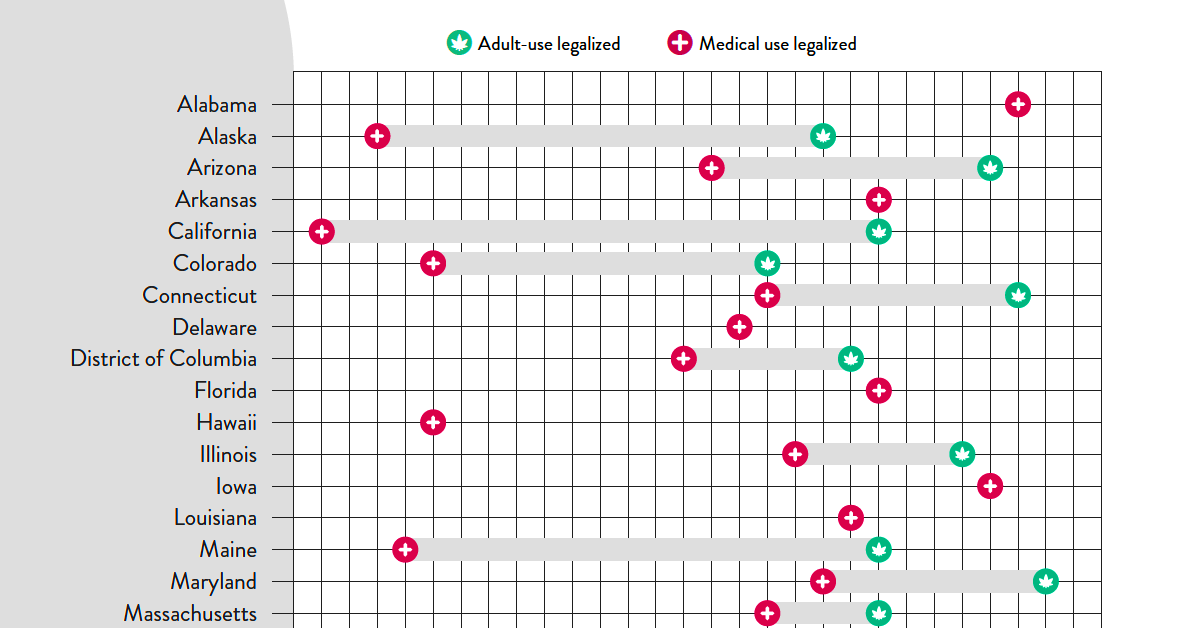
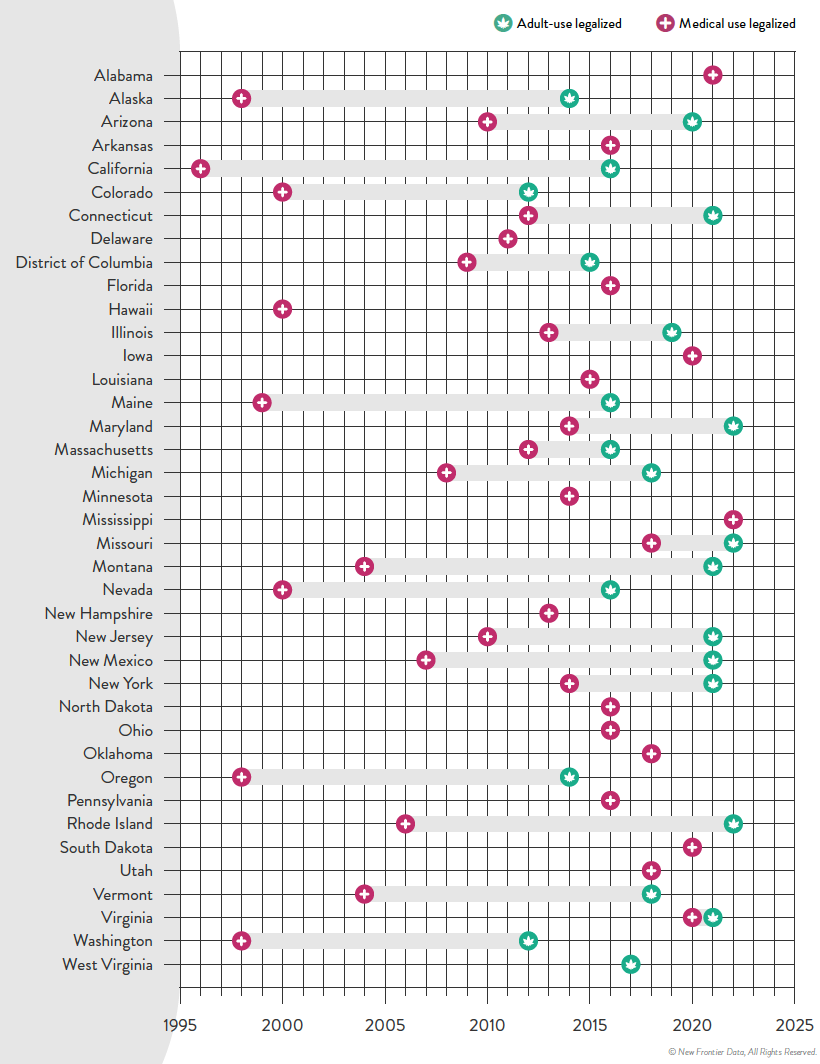
Timeline: Cannabis Legislation in the U.S.
At the federal level, cannabis is still considered an illegal substance. That said, individual states do have the right to determine their own laws around cannabis sales and usage.
This visual from New Frontier Data looks at the status of cannabis in every state and the timeline of when medical and/or recreational use became legal.
Cannabis Through the Years
In the U.S., the oldest legalese concerning cannabis dates back to the 1600s—the colony of Virginia required every farm to grow and produce hemp. Since then, cannabis use was fairly wide open until the 1930s when the Marihuana Tax Act was enforced, prohibiting marijuana federally but still technically allowing medical use.
Jumping ahead, the Controlled Substances Act was passed in 1970, classifying cannabis as Schedule I drug—the same category as heroin. This prohibited any use of the substance.
However, the 1970s also saw a counter movement, wherein many states made the move towards decriminalization. Decriminalization means that although possessing cannabis remained illegal, a person would not be subject to jail time or prosecution for possessing certain amounts.
By the 1990s, some of the first states passed laws to allow the medical usage of cannabis, and by 2012 two states in the U.S.—Washington and Colorado—legalized the recreational use of cannabis.
Cannabis Legislation Today and Beyond
The MORE Act (the Marijuana Opportunity Reinvestment and Expungement Act) was passed in the House early 2022, and if made law, it would decriminalize marijuana federally.
“This bill decriminalizes marijuana. Specifically, it removes marijuana from the list of scheduled substances under the Controlled Substances Act and eliminates criminal penalties for an individual who manufactures, distributes, or possesses marijuana.”– U.S. Congress
Cannabis still remains illegal at the federal level, but at the state levels, cannabis is now fully legal (both for medicinal and recreational purposes) in a total of 22 states.
Over 246 million Americans have legal access to some form of marijuana products with high THC levels. Looking to the future, many new cannabis markets are expected to open up in the next few years:
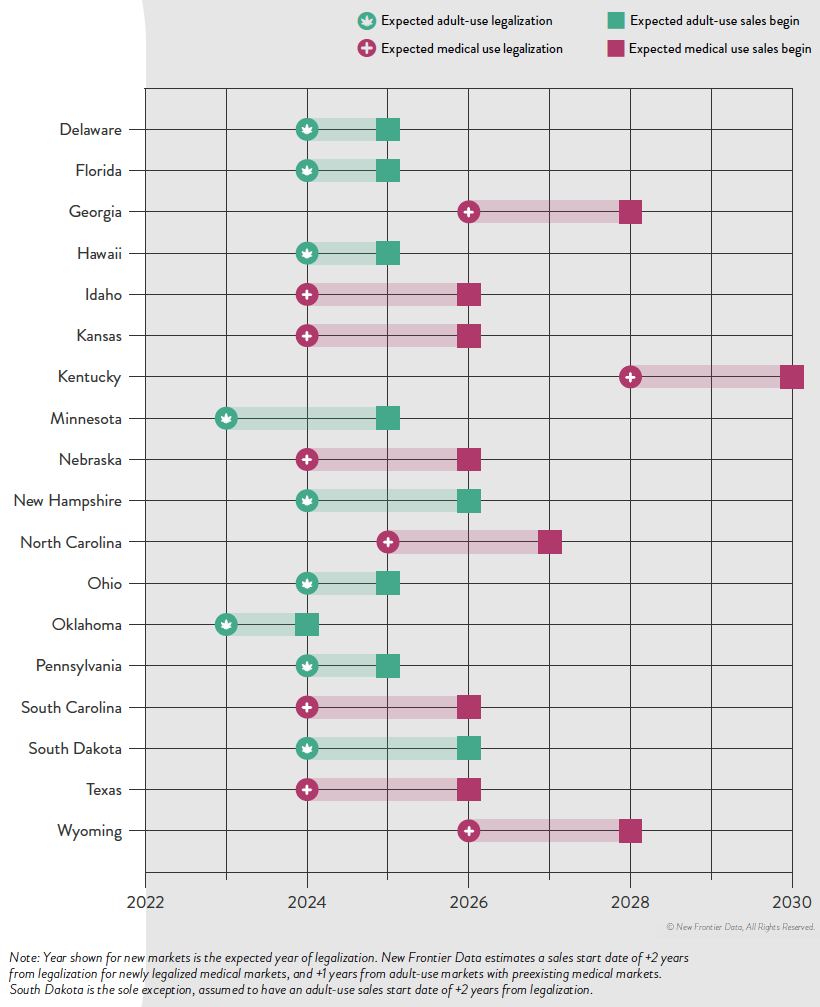
The earliest states expected to open up next for recreational cannabis sales are Minnesota and Oklahoma. There is always a lag between legalization and actual sales, wherein local regulatory bodies and governments set standards. States like Kentucky, on the other hand, aren’t likely to even legalize medicinal cannabis until 2028.
It’s estimated that by 2030, there will be 69 million cannabis consumers in the country, up 33% from 2022.
Overall, the U.S. cannabis market is likely an important one to watch as legal sales hit $30 billion in 2022. By the end of the decade, that number is expected to be anywhere from $58 billion to as much as $72 billion.
-

 Mining1 week ago
Mining1 week agoGold vs. S&P 500: Which Has Grown More Over Five Years?
-

 Markets2 weeks ago
Markets2 weeks agoRanked: The Most Valuable Housing Markets in America
-

 Money2 weeks ago
Money2 weeks agoWhich States Have the Highest Minimum Wage in America?
-

 AI2 weeks ago
AI2 weeks agoRanked: Semiconductor Companies by Industry Revenue Share
-

 Markets2 weeks ago
Markets2 weeks agoRanked: The World’s Top Flight Routes, by Revenue
-

 Countries2 weeks ago
Countries2 weeks agoPopulation Projections: The World’s 6 Largest Countries in 2075
-

 Markets2 weeks ago
Markets2 weeks agoThe Top 10 States by Real GDP Growth in 2023
-

 Demographics2 weeks ago
Demographics2 weeks agoThe Smallest Gender Wage Gaps in OECD Countries








